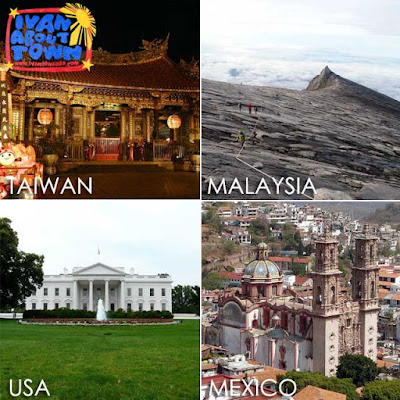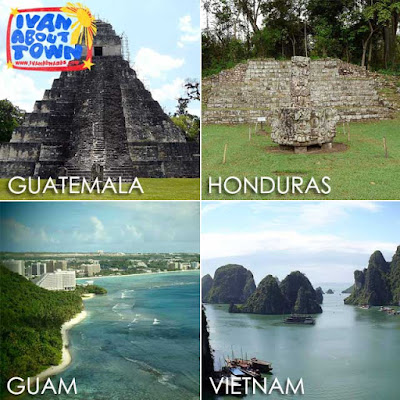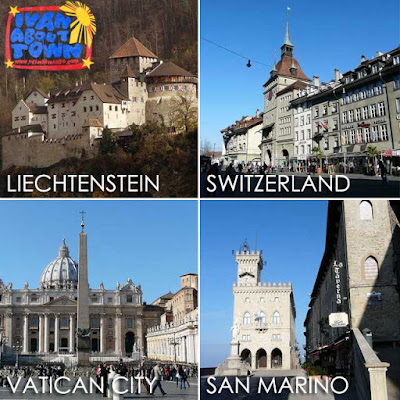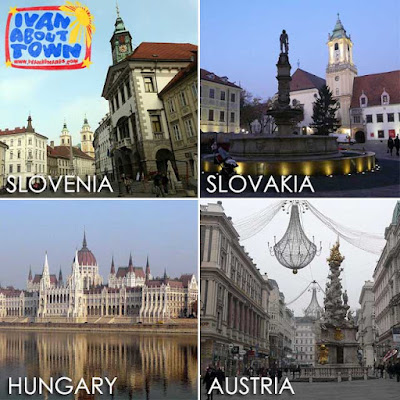
Visa application procedures have been a common query friends and readers ask me. Just yesterday, I was discussing with a friend who found it such a hassle to apply for several visas for just one trip. I realized I had applied for several visas last year alone. So I'm sharing my tourist visa application experiences beginning with South Korea since I'm currently here.
Here is a tip, when applying for a visa, make sure to photocopy or request for duplicate copies of all the documents you will submit. This will come in very handy and will make life easier for you when you apply for a visa for another country.
Aside from short-term tourist visas being free of charge to Philippine passport holders for stays of 59 days or less, the good news is that the Ministry of Justice of South Korea had simplified Korean tourist visa requirements last year to attract more tourists from South East Asian countries, including the Philippines. Aside from the single entry visas, they now issue double entry and extended multiple entry visas with validity from one to three years. In fact, I was given an extended multiple entry visa valid for three years when I applied for this trip.
The basic requirements are: (1) application form, (2) one passport-sized photo and (3) your original passport with at least six months validity and a photocopy of the first page.
Note that the Korean Embassy is very strict about complete requirements. So make sure you have everything that is needed. In many cases, people are sent away since requirements were incomplete.
Single Entry Visas
For single entry short-term visas (C-3) for tourists, you also have to submit: (1) employment certificate or business registration issued by SEC or DTI, (2) personal bank certificate, and (3) individual ITR or a copy of Form 2316 from the previous year. If you lack these documents, the Korean Embassy allows alternative documents for proof of income such as land titles, vehicle registration, country club or golf membership and pension certificates.
For an applicant who has traveled or has a valid visa to any one of the OECD member countries within the last five years, you are only required to submit requirement (1) and photocopies of OECD countries visa and arrival stamps. Here is a list of OECD countries.
If applicants are students, they are required to submit their school certificate, birth certificate and requirements (1), (2) and (3) of their parents.
Double Entry Visas
This visa is for visitors who plan to visit South Korea twice within six months. The visa requirements are the same as the single entry visa. A double entry C-3 visa is issued with a validity of six months.
Multiple Entry Visas
There are several criteria to qualify you for a multiple entry visa. These include the following (plus requirements):
(1) Applicants who have obtained permanent residency in any OECD member country (except South Korea) or people who visited OECD member countries more than two times within the last four years, or people who visited Korea more than four times within the last two years (original and photocopy of visiting records in the applicant's passport - visa and arrival stamps)
(2) Group tour guides who have traveled to South Korea more than once in the last two years
(3) Philippine government officials (employment certificate)
(4) High-rank officials and employees of international airline companies to South Korea (employment certificate)
(5) Applicants who earn more than $10,000 annually or have a platinum international credit card (official documents proving the financial status of the applicant or original and photocopy of platinum card)
(6) Applicants who are invited for contract and consultation by Korean public agencies in connection to resources and energy development (employment certificate and related contracts or guarantee letter from host)
(7) Applicants who are invited by the Korean Government to attend international forums, international conferences and international conventions (employment certificate and invitation letter)
(8) Executive or high ranking staff of a company that is listed in the Philippine Stock Exchange (business permit or employment certificate, individual ITR)
(9) Reporters, PD, journalists, news editors, etc. including people who work in a major media company for more than one year (identification card and employment certificate with the period of employment indicated, ITR)
(10) Professionals such as lawyers, doctors, accountants, professors, PRC or IBP card holders (employment certificate, PRC ID copy or IBP copy)
(11) Popular celebrities, artists, athletes, writers who can be searched or viewed in Philippine major media websites (a membership card or an ID, media records or records of concerned activity)
(12) Retired workers aged 55 years and above who are receiving pensions of more than Php20,000 monthly (any supporting document which proves he/she is a pensioner)
(13) People who have obtained a two year college degree or bachelor’s degree, master’s or doctorate degree from universities in Korea (diploma)
(14) Spouse, minor-aged children or parents-in-law of a Korean national (Korean couple's marriage contract and Korean marriage history)
(15) Dependent (spouse, children, etc.) of multiple visa holders (photocopy of multiple visa and proof of relationship documents - birth certificate, marriage certificate)
Application Procedure
There is no need for an appointment. After completing the required documents, applicants may file their applications at the Consular Office of the Korean Embassy from 9 to 11 a.m. only, Monday to Friday. This is on a first come, first served basis. Note that gates open at 8 a.m.
The Korean Embassy is located at the corner of Upper McKinley Road and C5 in Taguig City. When you arrive at the gate, you will need to get a gate pass and sign on the log sheet. There is a separate log for first time travelers and frequent travelers. So make sure you sign the right one.
The gate pass is not yet your number. After entering, you will have to get your number from the reception table. Again, the numbers for first time and frequent travelers are different. So make sure you get the right one.
When your number is called, you proceed to the window with your documents for checking. If they are complete and the consul does not have any questions, they will receive your documents. That is not an assurance that your visa is granted. They will then give you a claim slip indicating the date when you can return to the embassy to pick up your passport (and visa if approved). Don't lose it since you will need it to claim your passport. For first time travelers, processing takes five working days. While for frequent travelers, processing is three working days. It can take longer depending on the decision of the consul.
Releasing time is only from 2 to 4 p.m. The same entry procedures apply, get a gate pass and sign on the log sheet, then get a number once inside. Make sure you bring your claim slip with you because you will need this to enter and get a number. If you are unable to claim your visa on the scheduled date, you may pick it up on another date. But make sure to mention it to the consul. You may also have someone claim your passport for you with the necessary authorization letters. Also make sure to mention this to the consul.
Visa Fees
Visas are free (gratis) for stays of 59 days or less. If you plan to stay longer that 59 days, the visa fees are as follows: single entry Php1500; double entry Php3000; and multiple entry Php4000.
Visa-free entry to Jeju Island
Philippine passport holders can visit Jeju Island visa-free for up to 30 days. Note that you will have to fly direct to Jeju Island without passing through any Korean airport. Unfortunately, there are no direct flights to Jeju from the Philippines. To remedy this, you will have to pass through a third country in transit, such as Japan or Hong Kong, and take a flight to Jeju from there.
Download Korean Visa Application Form (print on A4 paper)
Embassy of the Republic of Korea
122 Upper McKinley Road, McKinley Town Center
Fort Bonifacio, Taguig City 1634 Philippines
Tel. No. (02) 8569210, Fax No. (02) 8569024 (Consular Section)
E-mail: philippines@mofat.go.kr or ph04@mofat.go.kr (Consular Section)






























